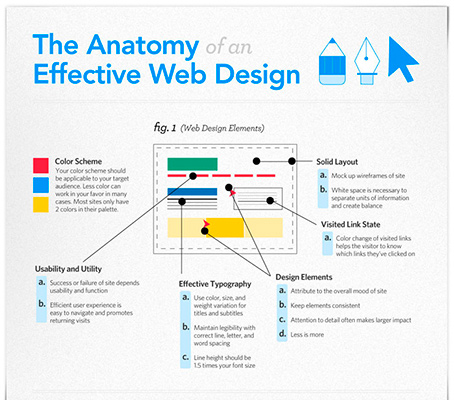The Development Of Site Layout: From Past To Present
The Development Of Site Layout: From Past To Present
Blog Article
Authored By-Carstens Bowles
In the past, web sites were simple and focused on details. Navigation was direct, and design was for desktop computers. Currently, individual experience is vital. Information guides layouts for simple navigating. Responsive layouts match various devices. Today, dark setting minimizes stress, and minimal food selections boost navigation. Interactive attributes engage customers, and vibrant visuals stand out. AI combination boosts engagement. See just how style has actually progressed to boost your on-line trip.
Early Days of Web Design
In the early days of web design, simplicity reigned supreme. Internet sites were fundamental, with limited colors, font styles, and designs. The focus got on providing info instead of flashy visuals. Customers accessed the internet with slow dial-up connections, so speed and performance were essential.
Navigating menus were straightforward, normally situated on top or side of the page. Sites were made for desktop, as mobile surfing wasn't yet common. Content was king, and developers focused on easy readability over intricate style aspects.
HTML was the key coding language made use of, and designers had to work within its restraints. https://claytonlhbwr.bligblogging.com/30419800/enhance-the-efficiency-of-your-web-site-by-utilizing-on-page-search-engine-optimization-strategies-that-increase-your-online-exposure-and-engage-your-target-audience and interactive features were minimal compared to today's criteria. Web sites were static, with little dynamic content or personalized individual experiences.
Rise of User-Focused Design
With the evolution of website layout, a change in the direction of user-focused style concepts has actually become significantly prominent. Today, producing internet sites that focus on user experience is critical for engaging site visitors and accomplishing organization goals. User-focused design involves recognizing the demands, choices, and actions of your target audience to customize the web site's design, web content, and features appropriately.
Developers now perform comprehensive research study, such as individual surveys and usability screening, to gather understandings and comments straight from users. This data-driven approach helps in developing user-friendly navigating, clear calls-to-action, and aesthetically enticing user interfaces that reverberate with site visitors. By placing the individual at the center of the design process, sites can deliver a more personalized and pleasurable experience.
go now has actually additionally emerged as a crucial facet of user-focused style, guaranteeing that sites are maximized for various gadgets and display sizes. This versatility improves access and functionality, accommodating the diverse methods customers connect with websites today. In essence, the surge of user-focused style symbolizes a shift towards producing electronic experiences that focus on the needs and expectations of the end individual.
Modern Trends in Web Design
Check out the most up to date patterns forming website design today. One noticeable trend is dark mode style, offering a streamlined and modern look while reducing eye pressure in low-light atmospheres. One more vital pattern is minimalist navigating, streamlining food selections and improving individual experience by focusing on essential elements. Integrating micro-interactions, such as animated switches or scrolling effects, can develop an extra appealing and interactive site. Receptive style stays vital, ensuring smooth customer experiences throughout numerous tools. In addition, utilizing vibrant typography and asymmetrical formats can add aesthetic rate of interest and accentuate certain material.
Incorporating AI technology, like chatbots for consumer assistance or customized suggestions, enhances user interaction and enhances procedures. Accessibility has additionally come to be a significant trend, with developers focusing on inclusive style practices to accommodate diverse customer demands. Welcoming sustainability by maximizing website efficiency for speed and effectiveness is another emerging trend in web design. Collaborating with customer feedback and data analytics to repeat and improve design constantly is vital for remaining relevant in the ever-evolving digital landscape. By accepting these contemporary patterns, you can produce an aesthetically enticing, user-friendly internet site that resonates with your audience.
Verdict
As you reflect on the evolution of web site layout from the early days to currently, you can see exactly how user-focused layout has ended up being the driving force behind modern-day trends.
Embrace the trip of change and adaptation in website design, constantly keeping the customer experience at the center.
Stay existing with the latest fads and innovations, and never ever quit progressing your technique to produce visually stunning and straightforward websites.
Evolve, adjust, and develop - the future of web design is in your hands.
